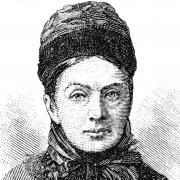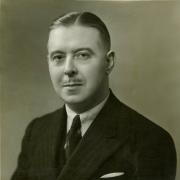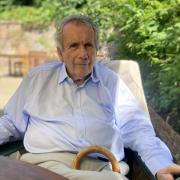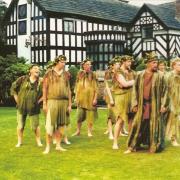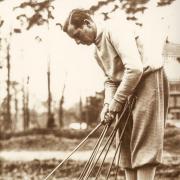There are quite a few Cottons in my hefty biographical dictionary including Charles (1630-87), a writer and friend of Izaak Walton; George (1813-66), the Rugby master who appears in Tom Brown’s School Days, and Sir Robert (1571-1631), the antiquary. But no mention of Cheshire-born Sir Arthur Cotton (1803-99), the engineer who devoted much of his life to the construction of irrigation and navigation canals throughout British India and saw him gain one of India’s greatest honours.
Born at Combermere Abbey, the former monastery, then country house near Burleydam betwixt Nantwich and Whitchurch on May 15, 1803, Arthur was the son of Henry Calveley Cotton (c.1755-1837) of Wrenbury, and Matilda née Lockwood (1788-1848), the daughter and heiress of John Lockwood, a marriage spawning no fewer than 13 children, with Arthur being the 10th of eleven sons. In a quite notable family, Arthur was a younger cousin of Stapleton Cotton, 1st Viscount Combermere (1773-1865), who served with distinction in the Peninsular War. Combermere Abbey had been dissolved by Henry VIII in 1538 but then acquired by Sir George Cotton who began the process of converting the monastic site into a family home.

Cotton became an Army cadet at the East India Company’s military academy in 1818, aged 15, then joined the Madras Engineers in 1819 as a 2nd lieutenant when he was aged but 16, although his first assignment was not in the subcontinent but the Principality, working for the Ordnance Survey in Bangor, North Wales (1820). Then he was based at the engineer depot, Chatham. It was 1821 when Cotton was appointed to serve overseas for the first time, an attachment to the chief engineer in Madras (today’s Chennai) and later became an assistant to the superintending engineer, tank department (this being water tanks as military tanks had not yet been invented). Then, as a young general, aged in his early 20s, Cotton served in the 1st Anglo-Burmese War (1824-26), the first of three such wars in the 19th century, which began principally over control of north-eastern India. Having joined the expeditionary force, Cotton was involved in storming forts and stockades, served in trenches and was mentioned in dispatches. He was promoted to captain in 1828 when he was still only 25. It was around this time Cotton began making his mark in the hydro world, conducting marine surveys, building dams, planning ports, and improving navigation and irrigation. His work on the Kollidam River (1836) was his first significant contribution to irrigating wide areas and came in the nick of time as a failure of the rains in the following year would have led to great suffering had this not been completed. He followed this with works on the Godavari River between 1847-52.
Cotton married Elizabeth Learmonth (1814-1907) in 1841 when he would have been in his early 30s, his wife around a decade younger. Their children were the evangelist and temperance campaigner Elizabeth Cotton (1842-1922), who became Lady Hope when she married Sir James Hope in 1877, and Major Alfred Cotton (1850-89) who was to die at sea while returning from active service in India.

In 1848, Cotton, who was already suffering ill health, took a break from the Indian climate and its attendant dangers and headed to Australia. It would be 1850 when he returned to India, being promoted to colonel, and come 1852, he had completed one of his most notable schemes, the dam works on the Godavari River at Rajahmundry. John Henry Morris, in his book Godavari, described these works as: ‘The noblest feat of engineering skill which has yet been accomplished in British India’; Cotton’s dam meaning that ‘large tracts of land, which had hitherto been left arid and desolate and waste, were thus reached and fertilised by innumerable streams and channels’.
Three years later (1855) he completed the aqueduct on the Krishna River. Cotton’s ambition knew few bounds and he was already considering schemes that would connect up all of India’s major rivers and canals in a national water grid, akin to what had been achieved back home by the navvies during the previous century.
Arthur Cotton retired in 1860, departing India, albeit not quite for the final time. He was knighted the following year and returned to India in 1862 and 1863, continuing to offer expert advice on river valley projects. In 1878 he appeared before a House of Commons committee to argue for an anicut (a dam in a stream to enable and maintain irrigation) to cross the Godavari.

Having dedicated much of his life to the building of irrigation and navigation canals and associated barrage works in India, work that benefited the many rather than the few, through averting famine and stimulating southern India’s economy, Cotton is understandably still honoured in parts of the country to this day – the country where he established an Indian school of hydraulic engineering. There is a museum devoted to his work, a barrage named after him and a statue hailing him. In 1877 he was invested with the Knight Commander of the Order of the Star of India (K.C.S.I.). In the same year, he retired from the Army with the rank of general.
Afflicted by deafness in his later years, Sir Arthur Thomas Cotton died on 24th July 1899, aged 96, in Dorking, Surrey. He was buried in Dorking Cemetery with his wife, Elizabeth, joining him when she died a few years later in December 1907.
And as for that biographical dictionary, well, Sir Arthur Thomas Cotton should most certainly be in it.




